Last Updated on January 9, 2023 by a Friendly Gardener
Brilliantly colored, and exotic, the Anigozanthos Flavidus, is popularly named for its resemblance to a kangaroo’s paw. Flowersboast claw-like shapes and grow in clusters. They begin as hairy buds, only to reward you with a burst of color.
This is a very unique plant that is found growing naturally in southwest Australia. It includes twelve different species. The Anigozanthos Genus of the plant includes eleven of these species while one species belongs to the Macropidia genus.
The individual plant’s stalk, colors, and size will depend on the specific species being cultivated with some being the result of hybridization. The Kangaroo Paws is cultivated commercially for its beautiful flowers which are sold, cut, and then exported globally.

When cultivated as an indoor houseplant, it can flower at any time. Outdoor plant cultivation in your home garden will see flowering in the spring and summer. The very fine hairs surrounding individual blooms influence the flower’s final color. These hairs produce black, orange, red, and yellow tints.
The natural pollinator birds and bees guarantee pollination and are facilitated thanks to the flower’s exceptionally long stalk and sweet nectar within. As these pollinators feed, they move from one bloom to the next guaranteeing pollination.
The Kangaroo Paw can be found as a tall or rather compact plant with heights ranging from two to more than ten feet. The famous Anigozanthos Manglesii is loved for its brilliant red flowers and is Western Australia’s flower emblem. When you observe one, there’s no surprise as to why. Another variety of Kangaroo Paw that deserves noting is the Macropidia Fulginosa also known as the Black Kangaroo Paw with its striking black blooms.
Kangaroo Paw Plant Care
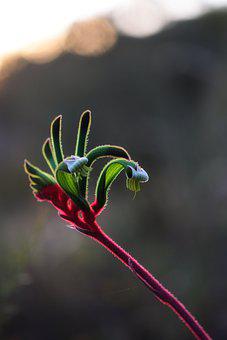
Soil
The Kangaroo Paw will manage fine in most soil types but prefers a soil bed that is slightly acidic as well draining. In this plant’s natural habitat, the Kangaroo Paw thrives in a sandy soil bed hence it does not require nutrient-rich soil as a growing medium. It does not do well when left standing in wet soil. It is recommended that if you use a standard potting mix, make sure to add in sand ì, perlite, or similar, to guarantee sufficient drainage.
Light
Light is a vital element in this plant’s survival, and it’s no wonder considering its natural habitat. The Kangaroo Paw plant loves direct sunlight exposure and will thrive when allowed at least six full hours of daily sunlight. Kangaroo Paws can survive in a spot with only partial sun, but blooms will not be as prodigious.
Water
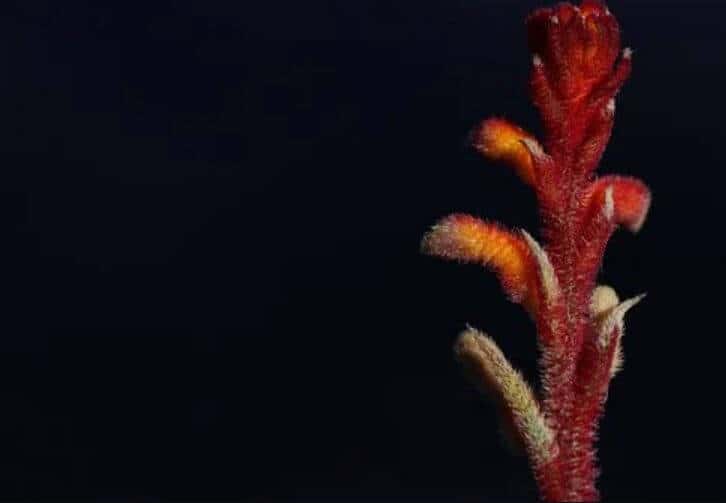
As an Australian native, this plant has some tolerance for drought, so the Kangaroo Plant will not need frequent watering nor require an environment with high humidity. They feature rhizomatic roots that will develop by spreading horizontally beneath the soil. Allow several inches of topsoil to dry out somewhat before watering. It is important not to overwater as these plants are at risk for developing root rot when soil is waterlogged or soggy.
If you reside in a sub-tropical zone, you can plan on watering beginning in winter through the flowering period. In cooler climates, avoid watering this plant during its dormancy. Once the Kangaroo Paw reawakens, water it every other week until its flowering period ends.
Temperature
For Kangaroo Paw plant outdoor cultivation, you need to reside in USDA hardy zones 9 through 11. Temperatures that measure between 70° and 80° Fahrenheit are the best. The Kangaroo Paw can stay outdoors year-round if temperatures do not go below freezing.
If freezing temperatures are a risk in your area, the Kangaroo Paw will require indoor wintering as it is a tropical plant. It will also require being kept dry during its dormancy.
Feeding
Your Kangaroo Paw is not a heavy feeder, Still, you can provide it with a boost by adding a little compost. Apply compost when your plant begins to produce new shoots. You can also opt for the annual application of a slow-release fertilizer during the plant’s growing season.
Pruning
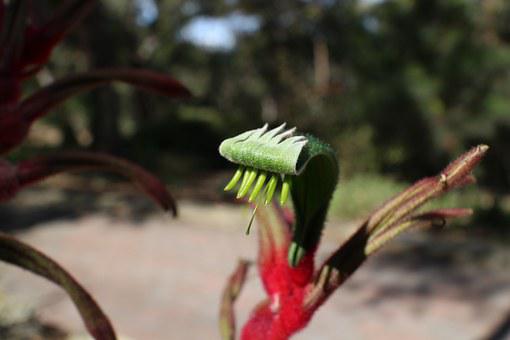
Pruning is a vital tool for your plant’s well-being. The Kangaroo Paw is susceptible to fungal infections, so dying or dead flowers should be pruned and removed. When the plant’s blooms fade, cut these away together with leaves. Pruning encourages a fuller, bushier type of growth for this plant and will occasionally encourage a second flowering.
When the flowers fade, the foliage will interrupt growth and the plant will stop producing blooms. Remove leaves and spent flowers only leaving leaves that are still actively growing. This stimulates future flowering.
When your plant’s first bloom opens, prune the stem top. By doing so, you’ll have some pretty flowers for a tabletop vase, and you will encourage your plant to continue growing the buds situated on the stem’s lower half.
Kangaroo Plant Propagation
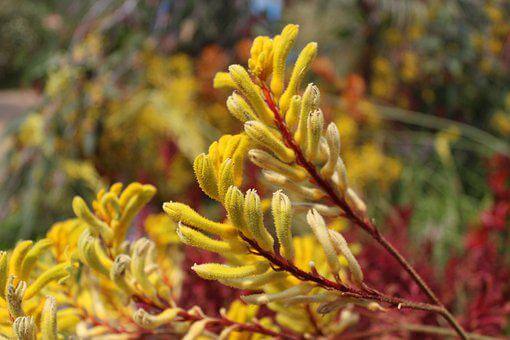
Kangaroo plant propagation can be accomplished using seeds in the springtime. The easiest and fastest method however for propagating your plant is through division. In the springtime, gently dig your plant up and divide the roots with a sterile knife. lReplant them separately in your garden bed or in individual pots. It is recommended that gardeners check roots every three years to verify if plants have become root bound. Generous space will encourage better growth.
If you choose to grow from seed, you can use starter trays using a seeding mix. Place the seeds in the seeding mix and cover them lightly patting them into the soil. Follow by watering thoroughly. Seed trays need to be kept moist to prevent seeds from drying out.
Place the tray in a sunny spot. After germination when the seedlings have grown approximately four inches high, transplant them to your garden bed or pots.
When planting outdoors, space the plantlets a foot to sixteen inches apart. Using organic mulch, mulch light but keep the mulch away from the plantlet’s base, Water thoroughly.
Diseases, Pests, and Problems
The Kangaroo Paw offers good pest resistance but is susceptible to spider mites indoors. Should you find traces of webbing underneath leaves, wash your plant through showering. Afterward, apply Neem oil or insecticidal soap to your plant. You may want to increase humidity where your plant is located as spider mites usually thrive in dry conditions.
The Kangaroo paw plant is also relatively disease resistant. Ink Spot disease is perhaps the exception to this rule. Ink Spot disease causes leaves and stems to turn black. If a Kangaroo Paw plant shows any signs, prune diseased parts, and position your plant in a sunny spot with ample air circulation. It’s advisable to change the potting soil, substituting it with fresh well-draining sandy soil.
Kangaroo Paw Toxicity
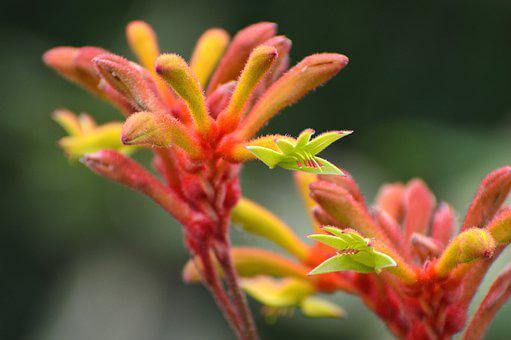
The Kangaroo Paw plant is not identified as poisonous to felines or canines. If your pet eats a part of this plant, it may simply regurgitate.
A Final Thought
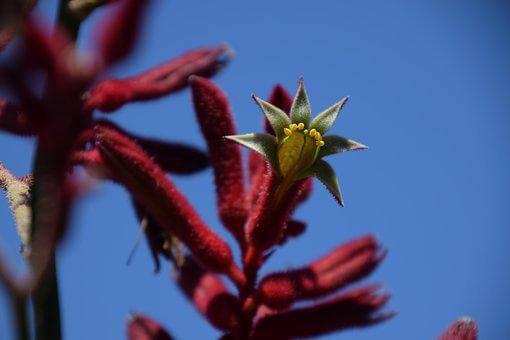
This is a beautiful, vividly colored plant with characteristic delicate hairs. A Kangaroo Paw plant will provide lots of colors in your outdoor garden or when cultivated as a unique houseplant. It is easy to care for and requires very little in return for its lovely flowers.

